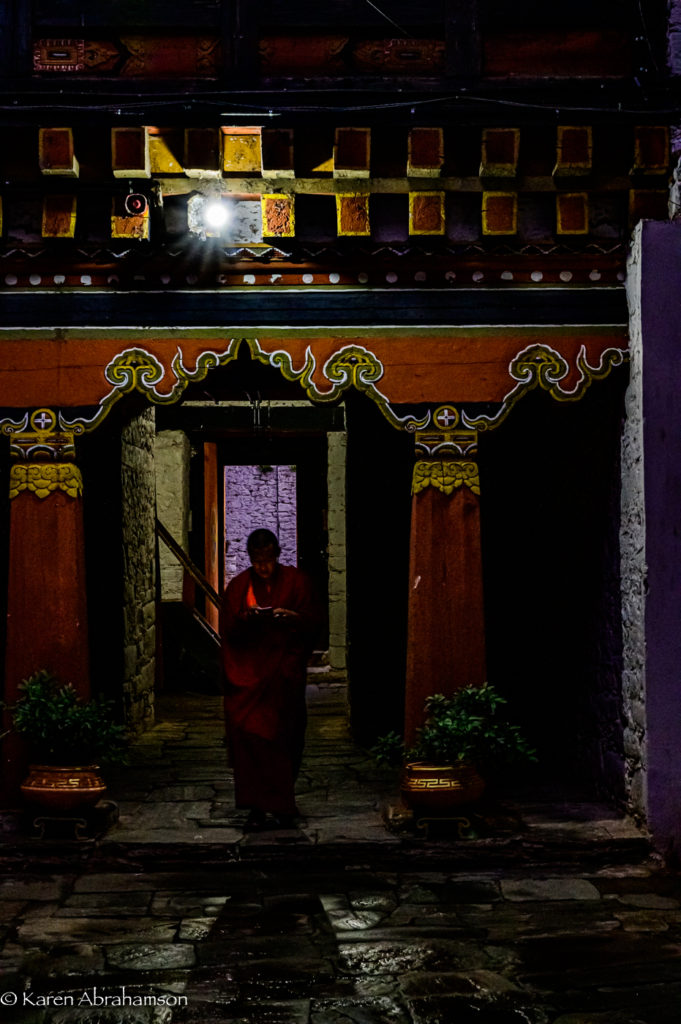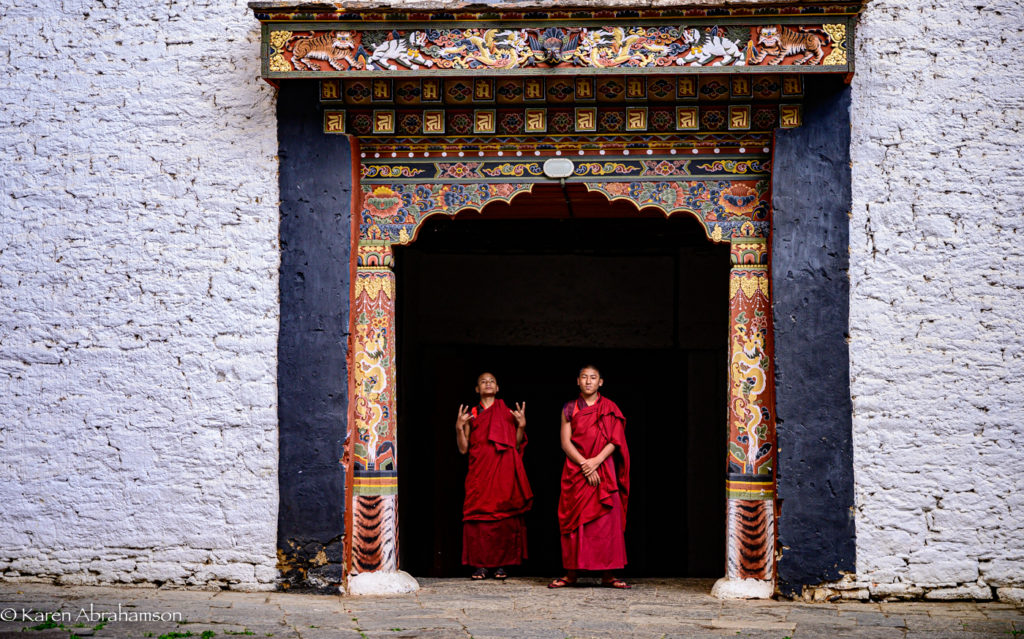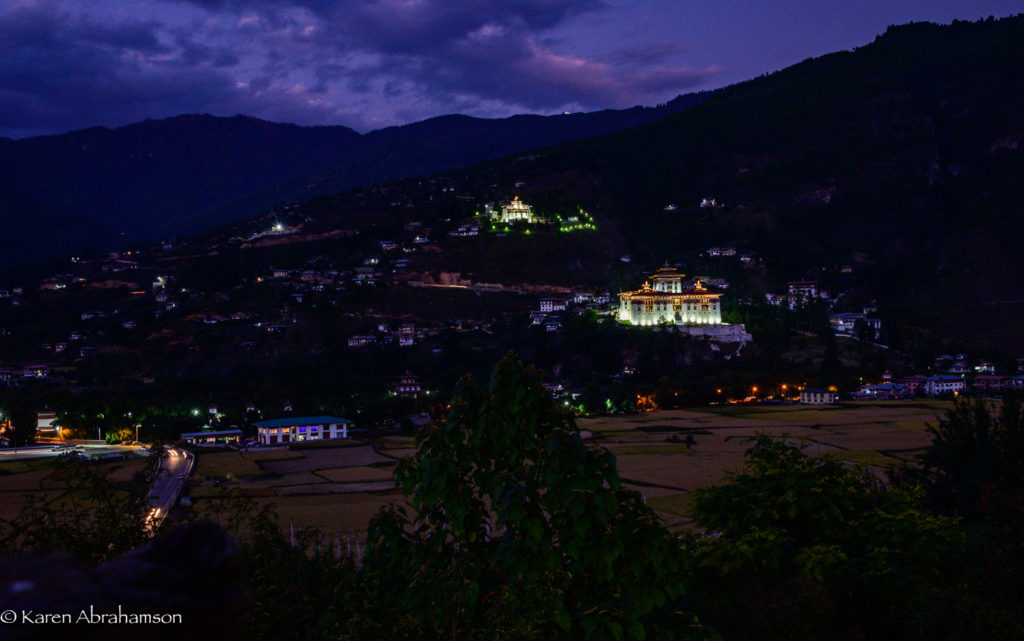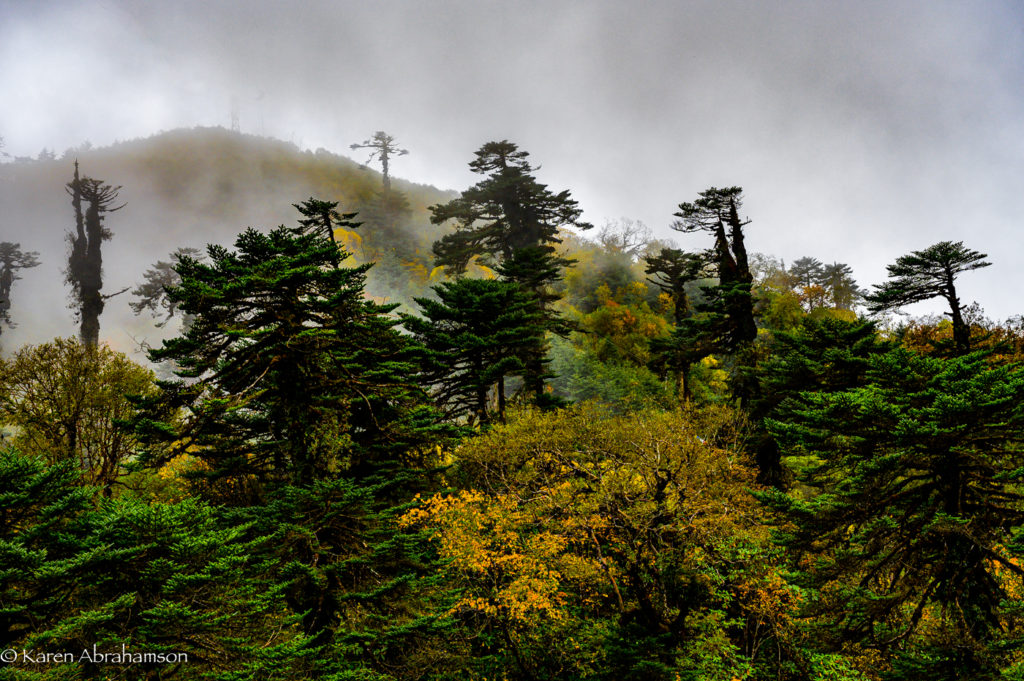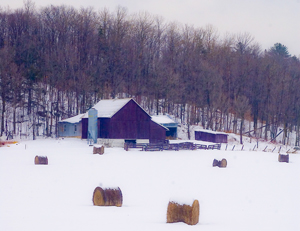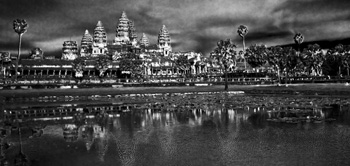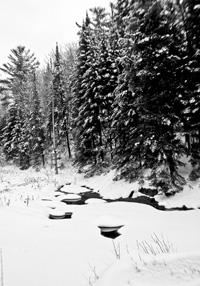Bhutan: Monks and Monasteries, Nuns and Nunneries
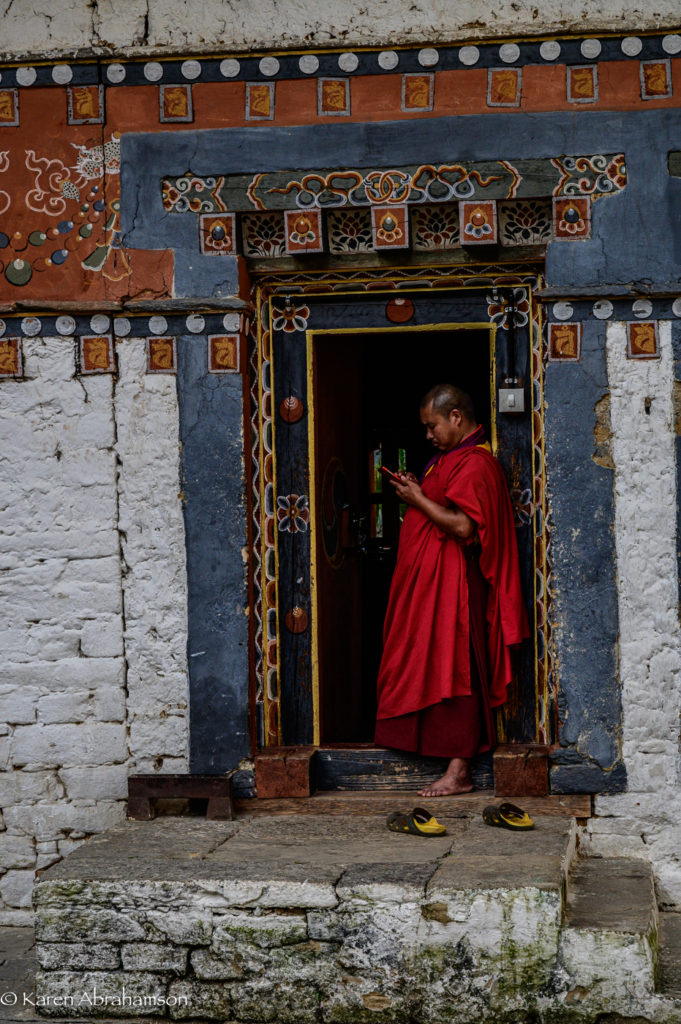
One of the images I will always remember of Bhutan is of the tall white walls and ornate carved lintels of the many monasteries and nunneries that dot Bhutan’s landscape. It seemed that beyond the mighty Dzong fortresses (that usually included a monastery), Bhutan’s landscape was littered with the gleaming roofs and walls of temples, monasteries and nunneries. Okay, that impression may have been added to by the prevalence of stupa and chorten (stone Buddhist monument, often containing religious relics) as well as smaller, white stone/clay structures found at homes, temples, monasteries etc. where people burn cypress or pine branches to purify the air. But within these glittering walls awaited the true jewels—the people.
On a personal level I can only imagine how invasive it must be to have camera-laden foreigners invading your place of quiet contemplation and snapping away. It must be even more so, when EVERYONE wants an image of a red-robed monk against a white wall. I can’t blame some of the monks for literally waving tourists away—heck, I’d most likely be doing a lot more to protect my privacy—but that wasn’t my experience with the monks and nuns of Bhutan.
Our first visit to a monastery was at Jakar Dzong. We arrived late in the afternoon after most tourists had come and gone. Not surprisingly, late in the afternoon was also when the monks ventured out, but I was surprised at how welcoming they were. Young monks posed for us, and one of the senior monks (he happened to be an adopted relation of our guide) invited us into his chambers to share a glass of arra, a powerful liquor distilled from rice, and some puffed rice. With all of us (seven photographers and two guides) crowded into his room and seated on the floor, our host proceeded to spend over an hour with us answering questions about Buddhism and monastic life.

That alone, was a gift, but he also invited us to an early morning ceremony at the temple so we were up and at the temple by 6 am—about 3 hours after the preparations had begun. There we sat at the end of the room while the monks chanted, blew long horns and beat ornate drums, while here and there the poor young monks would doze off for a few minutes before jerking awake again. I cannot convey to you the bone-deep vibration of the chanting and the soft yellow gutter of the butter lamps that illuminated the room.
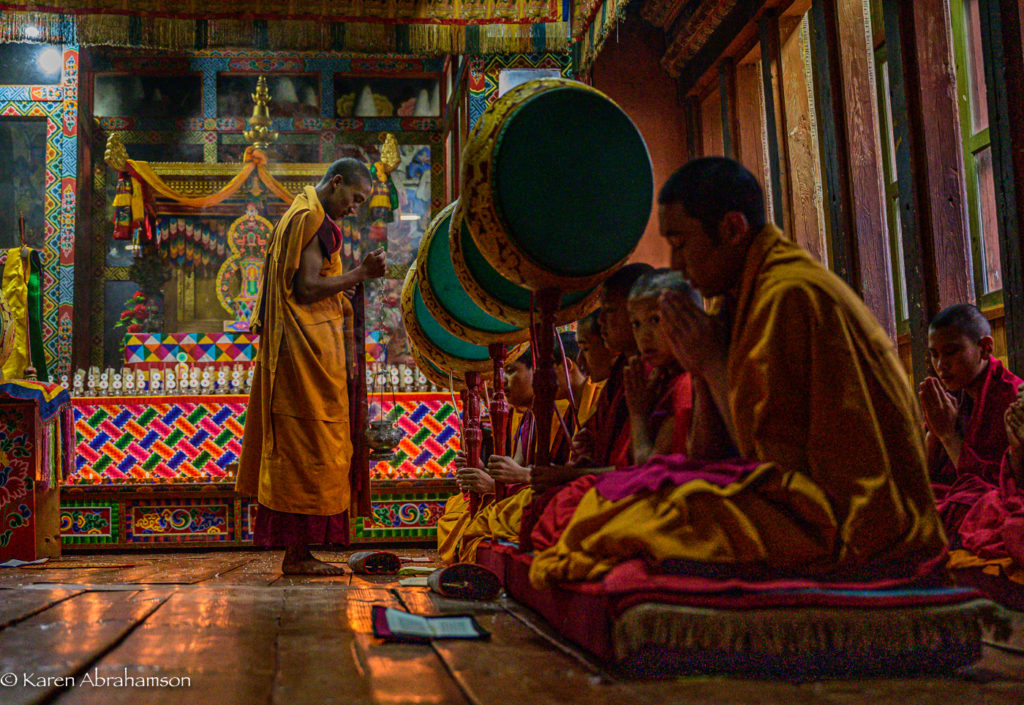
On another occasion we visited a nunnery set on a hilltop a long way off the main roads. When we arrived most of the young nuns were too shy to allow us to photograph them, but with a little cajoling and a lot of laughter we finally broke through. The ‘hit’ of the day was a small polaroid camera that allowed us to take photos for the nuns to keep. It was wonderful and the smiles were beatific.
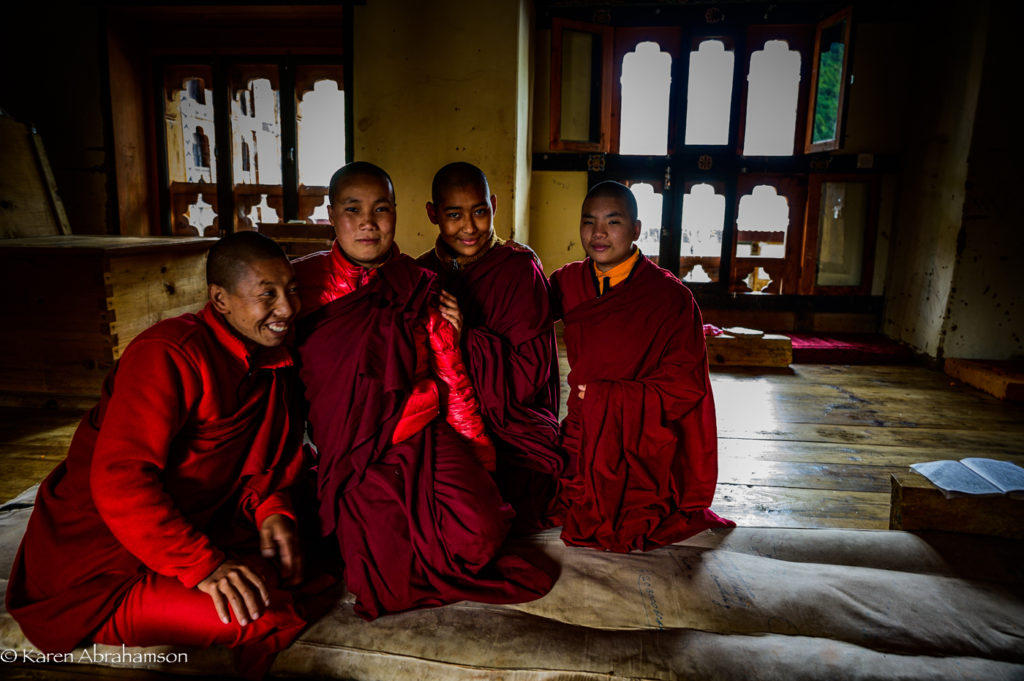
Maybe it was the time we took, instead of just swiftly touring around and snapping photos like so often happens with tourists, but it was nice to see the monks and nuns wave back when it was time for us to go.
